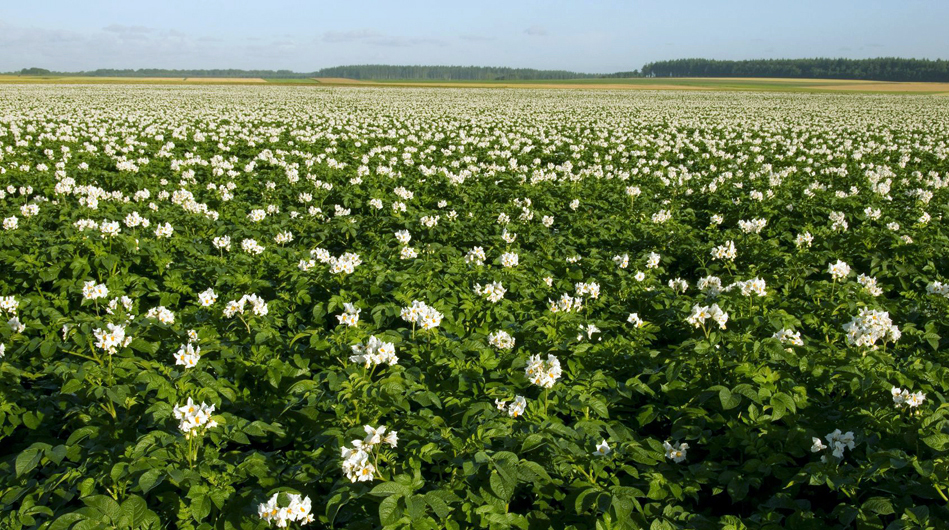
Consider the current opportunities and agronomic issues around the production of processing potatoes, says Darryl Shailes, Hutchinsons root crop technical manager.
Growing processing potatoes is seen by some as the least challenging market for potato growing, while the packing potato is the main target for production, he says.
“Certainly, the beautiful skin finishes achievable on the best light silts around the Wash and East Norfolk coast, which can be cold stored into May with little loss of bloom, or the early salad varieties grown in the favourable climates of coastal Suffolk and Cornwall, might seem to some more challenging and glamorous than growing the humble processing potato.”
“However, those who successfully grow processing potatoes certainly disagree, as the quality requirements for the processing crop, whilst different, are no less demanding than for the packing crop.
Mr Shailes notes that variety development in the crisping and French fry market is a very dynamic and fast changing environment, plus the agronomy demands of each new variety need to be finely adjusted, to get the very best result out of each and every field across the farm.
“2015 shows what can be achieved with these newer varieties, with many crops yielding in excess of 60 tonnes/ha and some even hitting 70 tonnes and above.”
“These are yields which were almost unheard of a few years ago, especially when growing the older varieties, and demonstrate the ongoing global investment in the breeding programme for improving processing potatoes.”
What are the key crop protection issues in these newer varieties that we need to consider in 2016, he asks.
“The obvious issue is the lack of ‘Vydate’ in the market for spring control in 2016. Spraing susceptibly of some of the newer processing varieties such as VR808, and the not so new Russet Burbank, will be one of the biggest issues to manage on some farms.”
“Vydate applied in-furrow has long been the standard for Spraing control, caused by the Tobacco Rattle virus, and which is transmitted by Stubby root nematodes, namely Trichodorus and the Paratrichodorus species of free living nematodes.”
Stubby root nematodes are most common on lighter soils, typically in those growing processing potatoes. The first step in their management should be testing for Stubby root nematodes in the potential fields coming into potatoes, then bait testing them to see if they are carrying the virus.
“The more information we have, the better we can manage the problem. “
“None of the alternative nematicides have an in-furrow recommendation, so will need to be used at the full overall rate incorporated pre-planting. This is the same as if treating for PCN, with the associated increase in costs where there is a perceived risk.”
Mr Shailes notes that alternaria seems to be an issue in many of the newer varieties and can be damaging, especially if an attack occurs early in the life of the crop. Therefore, knowing the variety susceptibility can help us to manage this potentially damaging disease as cost effectively as possible.
Weed control
“Many of the processing varieties are intolerant of metribuzin (e.g. Shotput), so weed control can be challenging, especially on the lighter soils. “
“Hutchinsons have achieved some excellent results using metobromuron (Inigo) both commercially and in trials during 2015, he highlights.
”The crop safety and efficacy of metobromuron when mixed with other materials such as prosulfocarb (Defy) was excellent, with very few follow up treatments required. The post emergence options in many potato varieties are very limited, so having this new active at our disposal will be extremely useful.”
